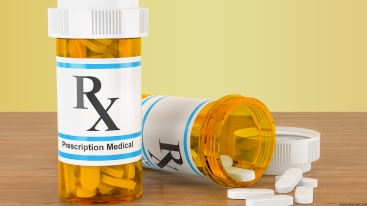
If you’ve started ADHD medications and noticed your skin acting weird, from breakouts, to rashes, or patches that don’t look quite right, you’re not imagining things. It’s just one of the many ways ADHD affects skincare. While medications like Ritalin (aka methylphenidate hydrochloride) are great for focus, they can sometimes come with side effects that affect your skin. Most people don’t associate ADHD medications with skin issues, which means even fewer people understand the intricacies of how Ritalin affects skin.
But the reality is that your skin is an organ too, and it reacts when your internal systems shift. Whether you’re on the classic Ritalin pill, extended-release versions like Concerta or Aptensio XR, XR extended release suspension, or the Daytrana patch, each form comes with its own unique potential to mess with your skin.
Extended-release capsules or patches like Concerta, Aptensio XR, or Ritalin LA, for example, are designed to release the medication slowly throughout the day. That means you are likely to get fewer ups and downs and less of that crash-and-burn feeling. But extended-release medicine affects the body differently since the stimulant stays longer in your system.
This guide breaks down how Ritalin affects skin, what the science says, and what you can actually do about it, because stressing about it just makes things worse.
Ritalin, ADHD, and Its Side Effects
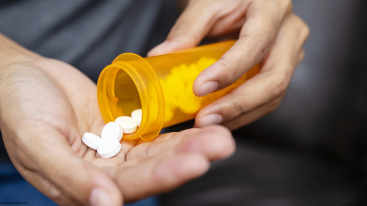
Ritalin, known generically as methylphenidate, is a central nervous system stimulant widely prescribed to treat attention deficit hyperactivity disorder (ADHD) and narcolepsy. ADHD is a condition marked by persistent patterns of inattention, hyperactivity, and impulsivity that can impact daily life.
Ritalin works by boosting certain brain chemicals (mainly dopamine and norepinephrine) to help improve focus and self-control. While Ritalin can be highly effective for managing ADHD, it’s important to be aware of its potential side effects.
How Ritalin Affects Skin: Common Side Effects of Ritalin on Skin
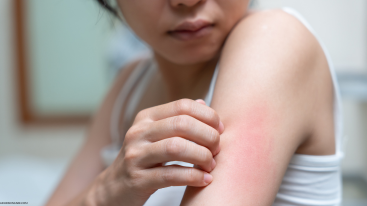
When Ritalin is taken to manage attention-deficit hyperactivity disorder (ADHD), it doesn’t just affect your brain. It can show up in unexpected places… like your skin. While not super common, Ritalin can cause skin reactions. Some are mild and manageable, while others might need a dermatologist’s attention. And if you’re taking it alongside other meds, the chances of skin weirdness might go up. That’s why keeping an eye on your skin while using Ritalin (or any methylphenidate hydrochloride-based med) isn’t just about vanity, it’s about health.
If you’re curious about how Ritalin affects skin, you’ll be intersted in knowing that sstudies have been launched into Ritalin and other ADHD medications that are methylphenidate-based treatments, including Daytrana, Concerta, and Aptensio XR. These medications are also used to treat narcolepsy. These reviews studied the effects these medication have on skin and other parts of the body. Let’s explore how Ritalin affects skin and what you can do about it.
How Ritalin Affects Skin: Acne
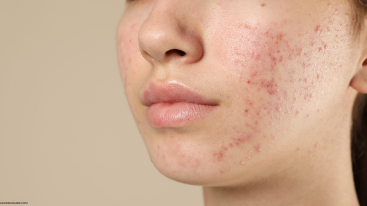
A 2021 published case report on a 12-year-old patient with attention deficit hyperactivity disorder (ADHD) taking oral Ritalin (methylphenidate) found that:
- After increasing the dose from 27 mg to 36 mg, the patient developed facial acne eruptions and scalp dermatitis
- These effects were linked to oral Ritalin, and improved when the dose was reduced
Takeaway: Even basic acne or itchiness could be a reaction to dose changes, especially if it flares up after increasing your meds.
How Ritalin Affects Skin: Chemical leukoderma, Rashes, Dermatitis, and Skin discoloration
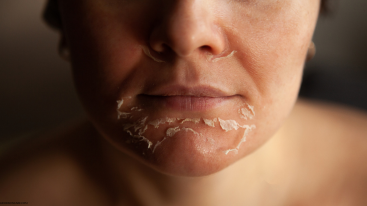
A 2015 study published in the American Journal of Nursing reviewed adverse skin effects linked to several methylphenidate-based treatments, including Daytrana, Concerta, and Aptensio XR. While Ritalin (the immediate-release version) wasn’t specifically mentioned, all of these medication share the same active ingredient (methylphenidate) and may produce similar systemic side effects depending on how they’re absorbed. They found that some patients experienced:
- Chemical leukoderma (permanent loss of skin color) from Daytrana, administered through a transdermal patch.
- Severe rashes, itching skin restlessness, and exfoliative dermatitis from Concerta, administered orally. This could show up as scaly skin redness, or skin scaling.
- Skin discoloration (pale, red, or bluish fingers and toes) and a cold feeling in the fingers or toes, especially in connection with these color changes, from Aptensio XR, also taken orally
Takeaway: Even if you’re not using the patch, skin rashes and color shifts are real possibilities with these meds, especially extended-release types.
Ritalin May Impact Circulation and Hormones
Many users report that Ritalin causes skin sagging, dullness, or an aged appearance even in the absence of dryness or acne. While this hasn’t been deeply studied yet, possible reasons include:
- Vasoconstriction: Ritalin may narrow blood vessels, reducing blood flow to the skin. Less circulation = fewer nutrients + slower cell turnover.
- Hormonal shifts: Some users suspect Ritalin lowers estrogen or disrupts hormonal balance, leading to collagen loss and thinner skin.
- Glucose imbalance: Like Adderall, Ritalin may spike or disturb glucose levels, triggering glycation (a process that breaks down collagen and elastin).
Ritalin may cause serious allergic reactions on your skin
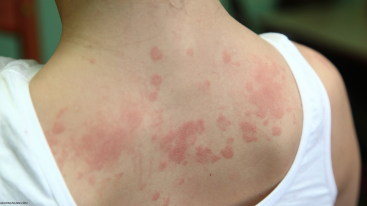
A 2007 study published in the Journal of Clinical Psychiatry examined dermal reactions in children using the Daytrana patch to treat attention-deficit disorder.
They found that:
- Around 50% of children developed mild erythema (redness) from Daytrana, administered via transdermal patch
- One child (0.3%) developed allergic contact sensitization to methylphenidate
Takeaway: Most reactions are mild and go away with patch rotation, but actual allergic reactions are possible, even if rare. If you experience a serious allergic reaction, such as swelling or difficulty breathing, seek immediate medical attention.
Some other skin-related side effects may include
- Itching
- Clammy skin
- Restlessness (with skin picking or scratching)
- Skin dryness (especially with repeated patch use or as part of exfoliative dermatitis)
- Rashes and hives (urticaria, reported in some oral formulations)
How Ritalin affects skin depends on your skin type and your overall routine but you can take steps to reduce intense side effects.
How to Manage Ritalin Side Effects on Your Skin

If you’re dealing with new or worsening skin issues while on Ritalin or any ADHD medication, talk to your doctor ASAP. They already understand how Ritalin affects skin and probably know that a simple dose adjustment can sometimes solve the problem. In the meantime, the next section will walk you through ways to soothe the irritation while waiting for your next appointment.
1. Don’t Panic; Track It
Start a skin log. Seriously. Just jot down:
- When the reaction started
- Where it’s showing up
- Any changes in your medication (new dose, new brand, new combo, to or from extended release versions)
If you’re seeing signs of rapid aging or visible skin changes (e.g., sunken cheeks, deepened folds, visible capillaries), take regular photos in consistent lighting. This gives your doctor concrete evidence and helps you spot whether things improve on dose breaks or medication changes.
2. Rotate Patch Sites (if you’re using Daytrana)
If you’re on the patch, never apply it to the same spot two days in a row. Patches are technically extended-release, but through a completely different route, so be sure to:
- Switch hips daily
- Check for redness, itching, or flaking
- If it gets worse, remove the patch and contact your prescriber immediately.
3. Soothe Itchy or Irritated Skin
Until you see your doctor, try:
- Cool compresses for itchy areas
- Gentle moisturizers with no fragrance or alcohol
- Barrier creams (like Cetaphil or Aquaphor) if you’re experiencing dryness or flaking
Be sure to avoid:
- Harsh exfoliants
- New actives (like retinol or acids)
- Scratching (we know, easier said than done)
4. Use Hydrating Products (Especially If You’re Dry)
Stimulants can mess with your nervous system and circulation, which sometimes shows up as dry, tight, or restless skin. If you are dealing with dry skin caused by Ritalin, a simple, consistent routine helps:
- Gentle cleanser
- Hydrating toner or essence
- Basic moisturizer (no extra fluff)
- If your skin experiences severe redness or scaliness, practice an ADHD-friendly skincare routine for dry-sensitive skin until you see your doctor
Some users experience rosacea-like reactions; red, inflamed bumps that don’t respond to acne treatments. This could be triggered by:
- Stimulant-induced inflammation
- Heat/sweat from the patch
- Vasodilation rebound when the med wears off
- Rosacea flares may require dermatological care not just OTC acne products.
5. Talk to Your Prescriber About Dose Adjustments
Sometimes a lower dose = less irritation. In the acne/scalp dermatitis case we mentioned earlier, the boy’s skin improved after his Ritalin dose was cut down.
Your doctor may:
- Adjust your dose
- Switch you to another formulation
- Recommend seeing a dermatologist if needed
Perfect call. Here’s a revised version that keeps it professional and protective of liability:
6. Ask Your Doctor About Supplements That May Support Skin Healt
If you’re experiencing dullness, sagging, or skin texture changes while on Ritalin, ask your healthcare provider whether targeted supplements could help. Some patients find relief using:
- Antioxidants
- Adaptogens or anti-inflammatories
- Collagen-supporting nutrients
- Essential minerals
Everybody reacts differently, especially while on stimulants. Always consult your provider before starting any new supplement, especially if you’re already taking prescription meds.
Non-Skin-Related Side Effects of Ritalin

While this article focuses on the skin stuff, it’s worth knowing what else Ritalin might stir up in your system especially if you’re trying to figure out what’s “normal” and what’s not.
Some of the most common unwanted effects unrelated to skin include:
- Palpitations (that racing heart feeling)
- High or unstable blood pressure
- Nausea and nervousness
- Diarrhea, abdominal pain, or upper stomach tenderness
- Sex-related issues (like lower libido or trouble finishing)
- Insomnia (trouble sleeping) was reported as a common side effect of Ritalin.
- Ritalin may cause dizziness and drowsiness as side effects
- Mild side effects of Ritalin include headache and insomnia
- Restlessness, unusual tiredness, and weakness
- Blurred vision
- Sleep disorder
- Common side effects of Ritalin may include decreased appetite and weight loss.
Not everyone gets these, and some fade as your body adjusts. But if they stick around or mess with your daily life, don’t wait it out; your doctor can tweak your dose or try different ADHD medications.
Ritalin Dosage and Administration: Don’t Freestyle
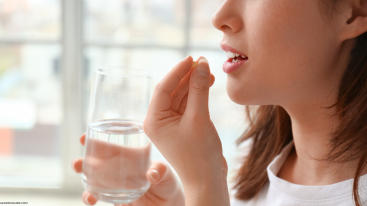
When it comes to Ritalin, sticking to your prescribed dose isn’t just about being responsible; it’s about staying safe. Whether you’re on instant-release or extended-release, the way you take it matters.
Here’s what to keep in mind:
- Always follow the prescribed dose your healthcare provider gives you.
- Don’t take more than directed, and don’t take it more often, doing so increases the risk of side effects like agitation, anxiety, or worse.
- In rare cases, an overdose can occur, which can cause serious symptoms like bigger mood swings, severe restlessness, or even overdose. (P.S.: Symptoms of overdose: agitation, anxiety, bigger pupils, blurry vision, and in some cases, you may hear things (such as auditory hallucinations). Other symptoms of overdose include agitation, confusion, and irregular heartbeat. If any of the symptoms of overdose occur, contact your doctor immediately.)
- Ritalin can be taken with or without food, but consistency helps, especially with extended-release versions.
If you’re not feeling right, don’t adjust your dose on your own. Talk to your provider so they can help fine-tune it safely.
Signs of Overdose of Ritalin
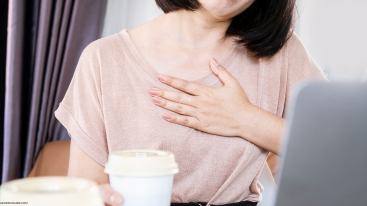
Beyond understanding how Ritalin affects skin, you need to know what signs point to a possible overdos. If you’re worried you accidentally exceeded your doctor’s prescription, here are some signs of a possible overdose of Ritalin.
- Clammy skin, palpitations, pounding (possible signs of adverse reaction or overdose)
- Muscle cramps or twitching
- Restlessness, unusual tiredness, and weakness
- Palpitations (that racing heart feeling)
- High or unstable blood pressure
- Nausea, nervousness, overactive reflexes or uncontrolled repetitive movements
- Discomfort, confusion
As you may have noticed, some signs of overdose overlap with expected side effects of Ritalin. If you have any reason to worry about an overdose, contact your health practitioner immediately.
Serious Health Risks of ADHD Medications like Ritalin
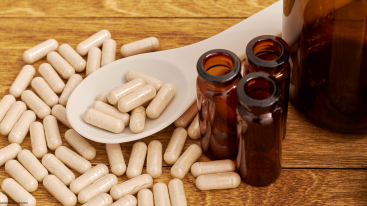
Most side effects of Ritalin are manageable, but a few can be serious and need immediate medical attention.
These include:
- Irregular heartbeat
- Shortness of breath
- Loss of consciousness, chest pain (warning signs that require prompt medical attention)
- Prolonged or painful erection (called priapism, and yes, a prolonged erection is a real emergency)
- Serious allergic reactions (like swelling, hives, or trouble breathing)
- Hearing things (such as auditory hallucinations)
Ritalin can also make existing heart conditions or blood vessel problems worse. If you’ve got a history of high blood pressure, heart murmurs, or circulation issues, or trouble breathing, this is something your doctor needs to know before starting treatment.
Tip: Regular check-ins and bloodwork can help catch any red flags early, especially if your dose changes or you’re taking other meds alongside Ritalin.
Ritalin and Heart Disease: What You Should Know
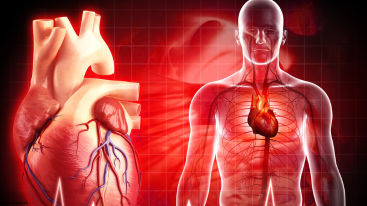
Ritalin can raise your blood pressure and heart rate, which means it’s not just your brain speeding up, your heart can feel it too. For most people, this isn’t a huge deal, but if you have pre-existing heart conditions, it can get risky fast.
Common cardiovascular side effects include:
- Palpitations (like your heart is doing jumping jacks)
- Irregular heartbeat
- Chest pain or tightness
If you experience symptoms like dizziness or fainting, maintaining a proper lying or sitting position can help manage these effects and reduce the risk of injury.
In rare cases, it can contribute to heart disease or make existing issues worse. That’s why your doctor might check your vitals regularly, especially early in treatment or after dose changes.
Bottom line: If you’ve got any heart-related health history or if you often experience irregular heartbeats, talk to your provider before starting Ritalin. Regular monitoring helps catch problems before they escalate.
Ritalin’s Interactions with Other Medications
Ritalin doesn’t always play nice with other medications, and that includes prescriptions, over-the-counter meds, supplements, and even herbal teas.
Some combos can:
- Increase side effects
- Weaken how well Ritalin works
- Or just make your body feel… off
That’s why it’s super important to:
- Let your doctor know everything you’re taking (yes, even that “natural” energy booster or multivitamin)
- Avoid mixing Ritalin with alcohol or recreational drugs
- Avoid drinking alcohol while taking Ritalin to prevent adverse interactions
- Check in regularly, your medication list might change, and so might the risks
Quick tip: Keep an updated list of all your meds and supplements on your phone. It’ll make every doctor visit faster and safer.
Ritalin and Substances: Alcohol, Recreational Drugs, and More
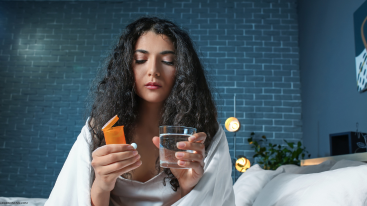
Mixing Ritalin with other substances can be risky business. Alcohol, recreational drugs, and even some herbal or vitamin supplements can interact with Ritalin in ways that increase the chance of unwanted side effects. For example, drinking alcohol while on Ritalin can make you feel extra dizzy, drowsy, or even cause changes in your vision. Combining Ritalin with other central nervous system stimulants, like cocaine or amphetamines, can seriously raise your blood pressure and heart rate, putting extra strain on your heart.
It’s not just prescription medication you need to watch out for. Herbal or vitamin supplements can also interact with Ritalin and may increase the risk of side effects. That’s why it’s so important to keep your healthcare provider in the loop about everything you’re taking, from over-the-counter meds to vitamin supplements and even that “all-natural” energy booster. Being upfront about your full medication and supplement list helps your provider keep your treatment safe and effective.
Management Tips for Ritalin Side Effects

If Ritalin’s messing with your skin (or anything else), you don’t have to just push through. Small tweaks to your routine can make a big difference.
Here’s what helps:
- Stay hydrated – Stimulants can dry you out, inside and out.
- Eat balanced meals – Don’t skip food, even if Ritalin kills your appetite. Your skin and brain need fuel. Appetite control medications should only be used under the guidance of a healthcare provider, as they can interact with Ritalin.
- Move your body – Exercise can ease restlessness and boost circulation (hello, healthier skin).
- Sleep matters – Poor sleep can worsen both ADHD symptoms and side effects.
- Avoid alcohol and random supplements – They can clash with your meds without warning.
- Talk to your prescriber – Seriously. They can adjust your dose or switch meds if needed. You don’t have to figure it all out alone.
Managing Ritalin side effects takes some trial and error, but with the right support, your focus and your skin can both get what they need.
Monitoring and Follow-Up Is Important When Taking Ritalin
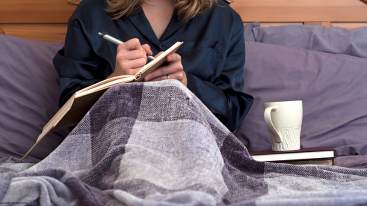
- Regular monitoring and follow-up appointments are essential while taking Ritalin.
- Healthcare providers can assess the effectiveness of treatment and identify potential side effects early on.
- Blood tests and blood pressure checks can help monitor cardiovascular health.
- Open communication with healthcare providers can help address concerns and adjust treatment plans.
- Regular monitoring can also help prevent long-term risks associated with Ritalin use.
TL;DR
- Ritalin can have various effects on the skin, ranging from mild to severe.
- Understanding these effects and taking steps to manage them can help minimize risks.
- Regular monitoring, healthy lifestyle choices, and open communication with healthcare providers are crucial for safe and effective treatment.
- Ritalin can be an effective treatment for ADHD and narcolepsy when used responsibly.
- By being aware of potential side effects and taking proactive steps, individuals can ensure the best possible outcomes.
Don’t Forget:
- Do not take medical advice from anyone besides your doctor.
- For more information on Ritalin and its side effects, consult reputable medical sources and healthcare providers.
- Support groups and online forums can provide valuable insights and advice from individuals with similar experiences.
- Staying informed about the latest research and updates on Ritalin can help individuals make informed decisions about their treatment.
- Healthcare providers can offer guidance on managing side effects and adjusting treatment plans.
- Additional resources can also provide information on lifestyle changes and coping strategies.
Frequently Asked Questions About Ritalin and Your Skin
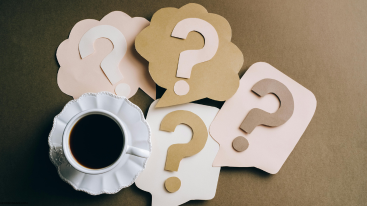
Is Ritalin good for skin?
Not really and not intentionally. Ritalin isn’t designed to help or harm your skin. That said, some people notice clearer skin if their ADHD meds help reduce habits like skin picking or stress-related breakouts. But for others, the meds themselves may trigger dryness, acne, or rashes.
Can Ritalin make your skin look older?
Possibly. Some users report sagging, under-eye hollows, or skin that looks “worn out” after taking Ritalin long-term. While formal research is limited, vasoconstriction, hormonal shifts, and oxidative stress may contribute.
Can Ritalin cause breakouts?
Yes, it can. While rare, acneiform eruptions (pimple-like breakouts) have been reported, especially after a dose increase. One case study even linked scalp dermatitis and facial acne to oral Ritalin. It doesn’t happen to everyone, but it’s definitely possible.
What is the most common side effect of Ritalin?
The most common side effects are usually appetite loss, trouble sleeping, nervousness, and increased heart rate. For skin specifically, mild itching, rashes, or dryness can also show up, especially with long-term use or higher doses.
Can methylphenidate cause dermatitis?
Yes. Both oral and patch versions of methylphenidate have been linked to dermatitis (inflammation or irritation of the skin). The Daytrana patch, in particular, has caused contact dermatitis and even chemical leukoderma (a rare pigment loss) in some users.
How do I handle skin dryness caused by Ritalin?
Start simple:
- Use a gentle, non-stripping cleanser
- Apply a hydrating toner or essence
- Lock in moisture with a fragrance-free moisturizer
- Drink more water. Ritalin can dry you out from the inside too
- If using the patch, rotate application sites and moisturize the area after removal
If the dryness doesn’t improve or turns into flaking or rash, it’s time to loop in your prescriber or dermatologist.
Does Ritalin cause high blood pressure?
It can. Ritalin may raise your blood pressure and heart rate, especially at higher doses. For most people, it’s a small increase but if you already have hypertension or heart issues, it can become a problem. That’s why regular blood pressure checks are a must if you’re on it long-term.
Does your skin go back to normal after stopping Ritalin?
For some people, yes. Especially if the issue was dryness or circulation-related. Many users reported noticeable improvement in skin texture and hydration just days after stopping. But this depends on your biology and how long you’ve been on it.
Leave a Reply